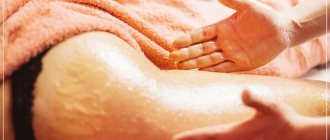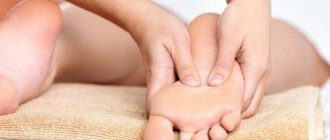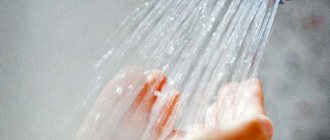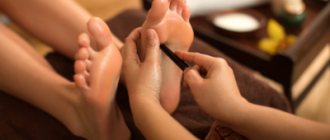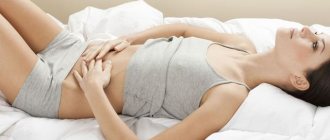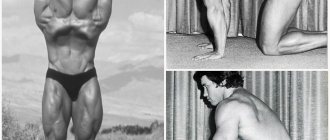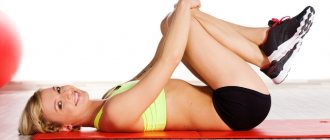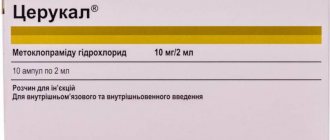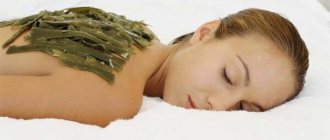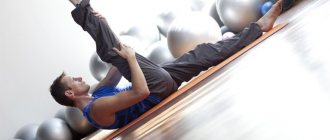Lymphatic drainage: what is it?
Manual lymphatic drainage massage should only be performed by a qualified specialist; in order to enhance the effect, special cosmetic masks and oils are often additionally used
Blood vessels move blood throughout the body, and lymphatic vessels remove intercellular fluid and metabolic products; both systems complement each other. If the transport of lymphatic fluid is disrupted, it stagnates: a disease in which lymph accumulates in the intercellular space is called lymphedema. Swelling most often occurs after injury and surgery, but also with many vascular diseases. With the help of lymphatic drainage, the physiotherapist stimulates the restoration and activation of the lymph flow.
There are main lymphatic drainage and tissue drainage. Main lymphatic drainage is aimed at working with the lymphatic centers, and tissue drainage works with small capillaries that are located throughout the body.
Complex decongestant physical therapy includes the following techniques:
- manual lymphatic drainage: lymphatic massage stimulates lymph outflow and local blood circulation;
- hardware lymphatic drainage;
- kinesio taping;
- bandaging the limb with bandages: after the massage, the areas affected by lymphedema may swell. To achieve therapeutic success, the areas are covered with bandages or compression stockings. External pressure mechanically prevents the re-accumulation of more fluid in the tissues;
- skin care: in addition to massage, it is necessary to take care of the skin. Lymphedema tissue has a poor blood supply, so wounds that are difficult to heal can occur. Consistent skin care has a preventive effect.
Why do you need lymphatic drainage massage?
Bruises and bags under the eyes, puffiness, sudden appearance of wrinkles, unhealthy appearance, weight gain and cellulite, problems with blood pressure, pain in the legs, varicose veins and many other unpleasant diseases and ailments are often the consequences of impaired functioning of the lymphatic system. In order to prevent and get rid of disorders, experts recommend lymphatic drainage. What it is? Lymphatic drainage is understood as a set of procedures aimed at removing and distributing excess fluid and metabolic products from the intercellular zone, achieving improved lymph flow using special techniques. Due to massage movements, the flow of lymph accelerates, tumors and swelling are removed, and metabolism improves. Lymphatic drainage can be manual or hardware.
What is lymph and why improve its outflow?
Lymphatic vessels have a diameter of 0.5 to 3 mm. The lymphatic system does not have a heart, but the vessels are mobile. With the help of special valves, lymphatic fluid can move in one direction. The lymphatic system also includes about 700 lymph nodes, which are distributed throughout the body. Lymph nodes are essential for the immune system: many types of immune cells develop and multiply in the lymph nodes.
Lymphatic vessels are universal connecting pathways between the lymph, blood system and lymph nodes. Throughout the body, nutrient fluid flows from the blood capillaries, reaching every cell of the body. The function of the lymphatic system is to remove excess tissue fluid and cell waste.
Proteins, fats and clotted blood can also travel through the lymph. Bacteria, viruses, foreign bodies and tumor cells are filtered out and transported through the lymph to be destroyed in the lymph nodes.
Edema increases the distance between body cells. This condition can lead to damage to cellular structures. In extreme cases, it even leads to cell death and open wounds. Therefore, timely reduction or elimination of edema is necessary to prevent tissue damage.
In the treatment of edema, two treatment strategies are used:
- the use of medications (chemical and herbal diuretics that stimulate the excretion of water through the kidneys);
- lymphatic drainage: recommended for use in cases of lymphedema, edema with increased capillary permeability.
Lymphatic drainage for the face (eyes) helps reduce puffiness and improve the structural condition of the skin. Lymphatic drainage for the legs is most often used to reduce lymphedema - lymph stagnation. Indications are determined by the attending physician.
Indications
For lymphedema, lymphatic drainage, both manual and machine, is highly recommended
Lymphatic drainage of the face and other parts of the body is used to treat congenital and acquired diseases of the lymphatic system:
- Primary lymphedema develops as a result of a congenital malformation of the lymphatic system. The tissue changes during the course of the disease, and the skin is susceptible to ulcers and eczema. In Russia, about 40,000 people suffer from primary lymphedema;
- Secondary lymphedema is caused by damage to the lymphatic system. Injuries occur as a result of surgery, after accidents, with severe inflammation and tumor growth. In Russia, about 80,000 people suffer from secondary lymphedema.
Relative indications for use:
- inflammatory edema: develops with rheumatic diseases, collagenosis, chronic eczema and other skin diseases, burns and radiation therapy;
- Sudeck's syndrome: often develops as a result of trauma. Lymphatic drainage massage helps eliminate pain and swelling during the healing stage;
- lipedema: painful fatty tissue that forms mainly on the legs and buttocks;
- orthostatic edema: occurs with prolonged standing and disappears overnight. This shape is typical for people who stand or sit for long periods of time;
- idiopathic edema: this form is observed in women in menopause. The swelling is not very noticeable, but patients complain of severe pain during the day. The reason is an increase in capillary permeability;
- Gestational edema: Hormonal and metabolic changes lead to edema during pregnancy. Swelling can also be caused by kidney disease during pregnancy.
Lymphatic drainage for varicose veins (dilation of the veins of the lower extremities) is used extremely rarely, since the effectiveness of the procedure for this disease has not been proven.
Contraindications and possible complications
For any malignant tumors, the use of lymphatic drainage is strictly contraindicated
Lymphatic drainage massage stimulates the removal of fluid from tissues, which puts a lot of strain on the kidneys and heart. If the patient has kidney or heart disease, it is recommended to refuse the procedure. In case of high blood pressure, heart failure, angina pectoris, cardiac arrhythmia, liver weakness, the lymphatic drainage procedure should be used only after consultation with a doctor.
Absolute contraindications to lymphatic drainage medical procedures:
- acute thrombosis;
- acute rheumatic attack;
- acute inflammation due to infection with microorganisms. Lymphatic drainage (massage) may promote the spread of pathogens;
- dermatitis and tissue damage, leg ulcers, skin scars;
- malignant tumor;
- severe heart failure;
- hyperthyroidism;
- arteriosclerosis of the carotid artery (to prevent the spread of blood clots or rupture of blood vessels);
- carotid artery syndrome;
- last trimester of pregnancy (to prevent premature birth);
- inflammatory bowel diseases;
- diverticulosis;
- intestinal obstruction;
- bladder irritation;
- intestinal damage due to radiation;
- massive atherosclerosis of the abdominal aorta;
- deep pelvic vein thrombosis.
To prevent the formation of lymphedema, it is recommended to adhere to the following recommendations:
- avoid damage to lymphatic vessels due to trauma or diagnostic and therapeutic interventions;
- the amount of lymph increases with physical overload, classical massage, overheating and exposure to extreme cold (frostbite). Therefore, it is recommended to avoid the above situations and activities;
- Excess weight and lack of physical activity complicate treatment, so it is recommended to engage in aerobic exercise - running, walking.
Hardware massage
Lymphatic drainage pressotherapy will help remove harmful elements, metabolic products and dead cells from tissues.
Hardware lymphatic drainage is a collective term for physiotherapeutic procedures in which various hardware techniques are used to remove intercellular fluid:
- galvanization;
- pressotherapy;
- iontophoresis;
- microcurrent and vacuum lymphatic drainage;
- ultrasonic lymphatic drainage.
The clinical effectiveness of galvanization and iontophoresis for lymphatic or cardiovascular diseases has not been proven. Microcurrent lymphatic drainage (electrolymphatic drainage) is a type of physiotherapy that uses pulsed current from 15 to 500 μA. A pulsed current of this magnitude does not have a statistically significant effect on biological tissues; the therapeutic effect is comparable to a placebo (dummy).
Vacuum lymphatic drainage is a physiotherapeutic method, the effect of which is based on the local effect of negative pressure on various areas of the skin. Vacuum lymphatic drainage has a therapeutic effect that is comparable to that of manual therapy. The procedure enhances lymph outflow and improves local blood circulation.
Ultrasonic lymphatic drainage is a relatively new and unstudied technique that uses ultrasound to accelerate the outflow of lymph. The clinical effectiveness of the procedure has not been studied in any large studies.
In pressotherapy, air is used for lymphatic drainage, which is under pressure exceeding atmospheric pressure. During lymphatic drainage of the whole body, the patient is in a horizontal position.
What's the secret?
Lymphatic drainage is a type of massage whose task is to eliminate the stagnation of excess fluid in the intercellular space. Water is practically everywhere in the body. It exists both inside cells and outside. In this case, the cells are nourished through the blood, and through the lymph - intercellular fluid - waste products and waste products are removed. If the lymph is stagnant and does not remove harmful substances, it becomes dangerous. Such stagnation, for example, causes an increase in blood pressure, inflammation and allergies, and hormonal disorders. Cellulite, bags under the eyes and varicose veins are also consequences of fluid stagnation. As the body ages and extra pounds accumulate, this phenomenon occurs more and more often, so many of us simply need to fight it. Everyone knows that doctors advise drinking two liters of water a day and periodically taking diuretics - and all this in order to make lymph flow constant and intense. Only in this way can all harmful elements, dead cells and metabolic products be removed from the tissues. That is why ladies on diets are strongly recommended to drink more water. But often a person is not able to keep track of his “water procedures” (sometimes you run too fast at work and you no longer manage to drink two liters of water a day).
Professional manual massage
Professional manual massage is performed on an outpatient basis. Because lymphedema is often a chronic condition, outpatient treatment is carried out over a long period of time.
In many cases, 1 manual lymphatic drainage is performed once a week, depending on the degree of swelling and the stage of the disease.
Treatment time is 30-60 minutes and depends on the severity of the disease. Bandaging of the lower or upper extremities is required on an outpatient basis only in severe cases; It is usually sufficient if the patient wears orthopedic stockings.
Inpatient treatment should be used for severe swelling. Later, irreversible tissue changes should be expected. Inpatient treatment is also indicated for swelling with ulceration, complications, or in cases where outpatient treatment does not achieve the desired results.
Treatment is carried out in rehabilitation centers in specialized lymphological departments. Inpatient treatment lasts from 2 to 6 weeks depending on the severity of the disease. You can do lymphatic drainage of the face or other parts of the body at home using special equipment. Equipment for lymphatic drainage can be purchased at specialized medical stores.
Contraindications and conditions for the procedure
Before you begin the leg lymphatic drainage procedure, study the contraindications. These include:
- Pathologies of the circulatory system, incl. thrombosis.
- Skin diseases and injuries.
- Infectious diseases.
- Pregnancy.
- Benign and malignant tumors.
If you are unsure about the state of your health, the site hudeem-bez-problem.ru recommends consulting a doctor. In the absence of contraindications and with the permission of a specialist, lymphatic drainage of the legs can be performed at home without third-party qualified assistance, but several important points should be taken into account:
- During the lymphatic drainage procedure, no significant pain should occur. According to the massage technique, light patting movements are carried out in the natural direction of the lymph flow - from the ankle to the thigh.
- To reduce the severity of orange peel, cosmetologists advise using special anti-cellulite products, mixtures of vegetable and essential oils, a composition of natural coffee, sea salt and honey.
- As a preparatory step to enhance the effect of lymphatic drainage, you can take a bath with the addition of essential oil.
- During the course of lymphatic drainage, you should drink more fluid - at least 2 liters per day. At the same time, it is forbidden to drink even plain water for 2 hours after the end of the procedure.
- It would be useful to consolidate the results obtained through physical activity. Strengthening the leg muscles, freed from the pressure of subcutaneous fat, can be an excellent prevention against the re-development of cellulite.
To obtain a decent result during the treatment course, you will need consistency and patience. It is recommended to do lymphatic drainage of the legs at home every other day for a whole month. In total there should be 15 procedures.
How to do lymphatic drainage at home?
For tangible results, you need to complete a course of 6 to 10 sessions of lymphatic drainage massage
Manual lymphatic drainage of the legs, face or arms should not be performed without consulting a doctor. Lymphatic drainage massage of the legs, if performed incorrectly at home, can aggravate the course of lymphostasis.
Before performing hardware or manual lymphatic drainage of the legs or arms at home, you should consult a doctor. Manual lymphatic drainage of the arms, face, legs, and abdomen can only be performed by a qualified massage therapist.
LiveInternetLiveInternet
Our lymph system bears a heavy burden to remove waste products from the body. The video will help you independently master the technique of lymphatic drainage massage of the abdomen, which prevents disruption of lymph flow, gives beauty to the body, energizes and improves health.
This massage will remove excess fat from the abdomen and waist, improve the structure of the skin, and accelerate cell renewal by increasing the movement of blood and lymph. In order for the lymph not to stagnate in the body and continue to flow through the lymph flow, it is necessary to maintain a constant outflow of intercellular fluid, i.e. drainage. With our own hands we can recreate the pump mechanism for our lymphatic system, helping it improve its performance.
Lymphatic drainage massage is a physical effect on certain lines of the body in the direction of lymph flow in order to normalize and strengthen the functioning of the body's lymphatic system. The lymphatic system removes accumulated toxins from the cells and tissues of the body, it plays an important role in metabolism, and its normal operation is a guarantor of good health, vital energy and a blooming appearance.
Massage of lymph vessels in the abdominal area is used both for weight loss and for the general improvement of internal organs and peritoneal tissues. It allows you to solve a number of problems: tighten the skin of the abdomen, remove excess fat from the abdominal area, and normalize metabolism.
At home you can do it yourself. The main thing is to remember the contraindications, which include pregnancy, menstruation, and acute intestinal infections.
Before the procedure, it makes sense to lightly warm up the abdomen. Warming up the abdomen generally looks like circular movements directed from the navel and spreading like a centrifuge to distant areas.
Lubricate your hands with cream or oil. Walk your fingers around the abdomen - starting from the bottom, on the right side of the abdomen, then up, across the abdomen and down the left side. You have to move through the intestines, from the ascending colon, to the transverse colon, and then through the descending colon. Then lightly massage your stomach with strokes in the same circle. Place your fingers near your navel and slowly rub your abdominal area clockwise in a spiral, gradually widening the circles.
When you feel warmth in the skin of your abdomen, begin the actual lymphatic drainage massage of the abdomen, presented in the video.
Massage movements are slow because the outflow of lymph occurs very slowly compared to blood circulation. Rapid movements can injure blood vessels. The thicker and slower the lymph, the more decay products it contains. As you undergo a daily lymphatic drainage massage, the lymph will become thinner and more fluid, therefore, the liquid along with metabolic products will be eliminated faster. At the same time, the cells, getting rid of excess moisture, decrease in size.
Due to the fact that the vessels that were previously compressed by swollen, inflamed cells no longer become compressed, oxygen enters the cells better. Collagen fibers, which distribute fatty tissue, after the cells are reduced, begin to receive their collagen, which was previously supplied in insufficient quantities.
When completing the procedure, repeat several stroking circular movements, as at the beginning of the lymphatic drainage massage.
It is important to maintain a drinking regime. 15-20 minutes after the massage you may feel thirsty. At the same time, to maintain the effect, it is extremely undesirable to drink or eat liquids for the first 2 hours. During lymphatic drainage massage, excess fluid is removed from the body, and fat cells experience stress. If you drink water or eat immediately after a lymphatic drainage massage, the fat cells will take on even more water than before. In 2 hours, the body will have time to adapt, and the cells will no longer retain water.
Good luck!
See also:
Self-massage for weight loss “Tuifu”
Massage for tightening the skin of the abdomen
Learn to do self-massage of the abdomen and get rid of diseases!
results
Lymphatic drainage massage has proven clinical effectiveness: the physiotherapeutic procedure stimulates the movement of fluid in the lymphatic vessels.
As the tissue relaxes, the pain may also go away. The blood supply to the tissue can also be normalized, which accelerates the regeneration process.
Compression therapy makes an important contribution to the further flow of fluid into the blood capillaries.
Depending on how advanced the disease is, hardware lymphatic drainage is performed from several times a day to several times a week. The effect of one treatment session lasts only a few hours, so the affected areas are bandaged with bandages to stabilize the therapeutic effect.
Lymphatic drainage massage cannot cure the cause, but it significantly improves the quality of life of patients and prevents complications. If cure is not possible (for example, due to congenital changes in the lymphatic vessels), the patient must undergo lymphatic drainage through massage for life.
Types of procedure
Based on the depth of impact of the lymphatic drainage procedure, there are three main types:
- Surface. Such manipulations affect the surface of the skin, including the receptors that conduct impulses inside the body.
- Deep such effects directly affect microscopic vessels. This type of procedure causes various muscles to contract, which significantly accelerates fluid metabolism in the body and helps normalize the condition of deep vessels.
- Interior. This is a special technique of acupressure in the groin and popliteal areas.
According to the methods of influence, lymphatic drainage procedures are classified as follows:
Press massage comes in two varieties:
- Bara compression massage - this technique uses increased pressure, which reduces the flow of lymph and enhances the diffusion of gases through the walls of the capillaries. As a result of the procedure, dermal cells get rid of oxygen starvation.
- Pulse lymphatic drainage is performed by applying variable pressure to a specific area. First, the pressure is high, then low. This method increases the elasticity of vascular walls, both blood and lymphatic. This procedure activates tissue regeneration in the affected areas. In various tissues, blood supply is accelerated and metabolism is improved.
Vacuum therapy is a method of applying negative pressure to a specific area of the body. As a result, cellular metabolism in the treated area and in the body as a whole is accelerated. This procedure requires caution when performing and should be carried out by specially trained people with sufficient experience. It also requires a preliminary medical examination. This is due to the fact that the vacuum can damage soft tissue in some people (bruises and even tears may form).
Myostimulation. Provided with weak electric current. The procedure is carried out with special sensors attached to the body, to which an electric current is supplied. The muscles contract forcibly. This provides a tenfold increase in lymph flow. Some devices provide vibration, which is the most beneficial for the body. The therapeutic effect of the lymphatic drainage procedure becomes noticeable in the treatment of edema if regular 30-minute myostimulation sessions are performed.
Most popular: Skin restoration without injections with peeling PRX-T33
Manual, also known as manual, lymphatic drainage. This method can be simply called superficial massage. Its purpose is to speed up the movement of lymph within the body. It has a general relaxing effect and normalizes cellular metabolism. This type of lymphatic drainage can be done at home without any problems.
Price
The cost of one session of lymphatic drainage massage varies from 1500 to 3000 Russian rubles. When paying for 10 or more sessions, there is usually a discount. The number of sessions a patient requires also varies greatly - from 2 to lifelong therapy.
Related Articles
Massage for adenoids: types and techniques of implementation, indications and contraindications
Lymphatic massage: technique, indications and contraindications
Lymphatic drainage: how to cope with lymph stagnation on your own?
Why does lymph flow from the leg: what to do and how to stop?
Intramammary lymph node of the mammary gland: what is it and for what symptoms should you consult a doctor?
What is inguinal lymphadenopathy: what is it, how does the disease manifest in men and women, why does it occur, treatment
